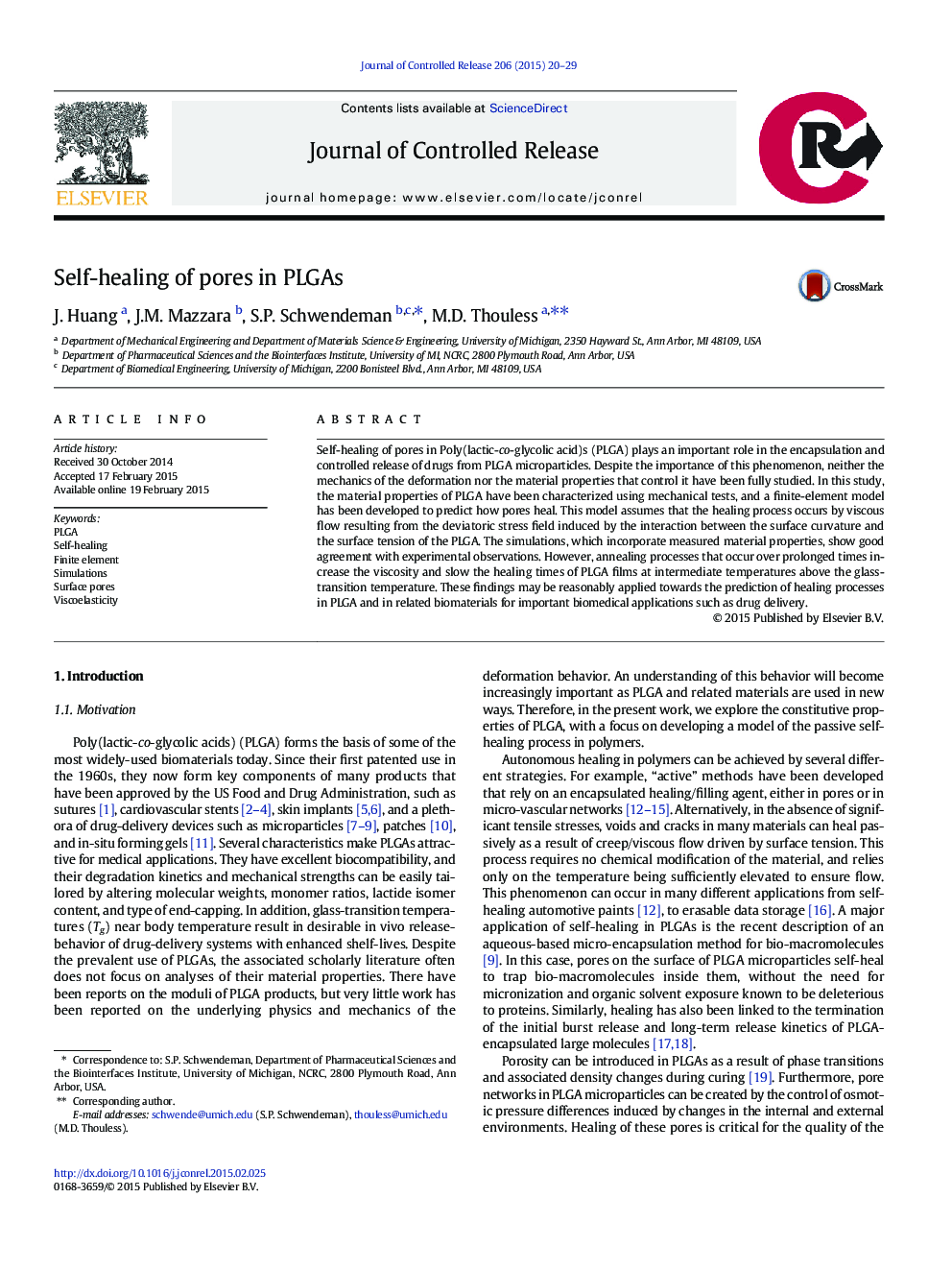| Article ID | Journal | Published Year | Pages | File Type |
|---|---|---|---|---|
| 1423803 | Journal of Controlled Release | 2015 | 10 Pages |
Self-healing of pores in Poly(lactic-co-glycolic acid)s (PLGA) plays an important role in the encapsulation and controlled release of drugs from PLGA microparticles. Despite the importance of this phenomenon, neither the mechanics of the deformation nor the material properties that control it have been fully studied. In this study, the material properties of PLGA have been characterized using mechanical tests, and a finite-element model has been developed to predict how pores heal. This model assumes that the healing process occurs by viscous flow resulting from the deviatoric stress field induced by the interaction between the surface curvature and the surface tension of the PLGA. The simulations, which incorporate measured material properties, show good agreement with experimental observations. However, annealing processes that occur over prolonged times increase the viscosity and slow the healing times of PLGA films at intermediate temperatures above the glass-transition temperature. These findings may be reasonably applied towards the prediction of healing processes in PLGA and in related biomaterials for important biomedical applications such as drug delivery.
Graphical abstractFigure optionsDownload full-size imageDownload high-quality image (202 K)Download as PowerPoint slide
